Here is today’s summary of the “Campfire Talks with Herbie”.
TameFlow Community Member: Rudiger Wolf
Name (and Company/Affiliation if desired)
Freelancer - Throughput Focus Ltd
Who are you?
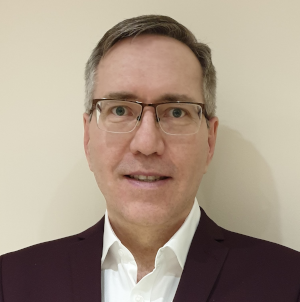
I was born and raised in South Africa. An early interest (ZX81 1KB of RAM) in computing had me study engineering, which I loved. I achieved a first class pass.
Very fortunate to have had a great education. Spent a year backpacking around Europe after school.
Was at University of Cape Town, in the late eighties at the height of the political apartheit protests and was there when Nelson Mandela was released.
The White government realised the game was going to be up sooner or later. I did an elective in economics, and it was clear from the data that the country was getting poorer slowly but surely. Clem Sunter did some scenario planning and brought the fighting factions together. The Prime Minster , F. W. de Klerk did a deal with the exiled and banned ANC.
Notable UCT Alumni :
- Chris Pinkham - created “Infrastructure as a service” AWS EC2 in Cape Town
- Mark Shuttleworth - Ubuntu Linux Distribution
- Chris Barnard - First Heart Transplant
I still did a year of conscription, Air Force, but ended up working at Council for Scientific and Industrial Research (CSIR)
Spent holidays at the beaches or on game farms/reserves. South Africa is a great country, but it has some challenges. Can recommend it for holidays.
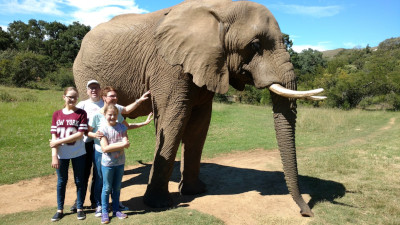
Worked in Johannesburg for several years, but the crime rate and comments by a friend who was working at a large bank made me realize that it was in my best interest to look for a new country. The Bank did training for newly elected government officials, and while the public official had good intentions they were not up to the job, poor schooling. Crime, corruption and the lack of sustainable planning in government. My father was shot. Shoot first then ask for your money. Very lucky to survive the initial event, although he did circum to the damage many years later.
Prior to coming over to the UK I joined a Dot-COM start-up in South Africa. Fantastic experience. We were changing the world. Working till late in the evenings. Great fun and excitement. Worked on some great projects BUT technology was very immature, and expectations were high. Started on my Agile journey with DSDM and formal project management.
I then had an opportunity, my partner was the first South African employee at Bloomberg, to move to London in 1999, and I’ve been in the UK ever since.
During my time here I joined another start up as person #9. That then grew into about 150 people, a technical services company. Had some great. Both small and large. Great fun, but then we had 9/11 and dot-com crash and … that was the end of that :(
How did you get involved with Agile, Coaching, Organizational Performance - and in particular with TameFlow?
I was doing coaching participants on seminars with an organization called Landmark. I highly recommend this organisation’s seminars. What you will see is how people can make dramatic changes to their lives after gaining insights into automatic modes of behaviours, that people are not aware of. Once you see these patterns, you can choose to take action. Lots of authentic conversations about what matters most to people. What make people tick. What makes you tick. What decisions have you made about how the world is and how that constrains your options.
In this seminar one of my coachees was Karl Buckridge. Co-incidentally I had read “The Goal” a couple of months previously. And the Karl worked with Eli Goldratt. I also read many of the other books in the TOC library, Necessary but Not Sufficient the story of Baan, ERP. The audio book is particularly good, Beyond the Goal.
I was enthralled by the concepts. My wife, who is a teacher, also went to the TOC for Education event. I attended a TOC event in Cambridge, and met Eli there. Another person I met was Ray Immelman. His video on the First Solar case study is amazing.
This then lead me to do Constraints Management Graduate Certificate with Prof Holt.
I’ve also been hanging out in the online Agile chat forums in the early 2000’s. The London Agile scene was fantastic. Lots of open events with people like Chris Matts, Dan North. Organisations like Skills matter and ThoughtWorks provided many open evening events to share knowledge.
One thing then led to another and I started freelance consulting in the Agile space.
Are you currently (or do you intend) making a living in this sector? And with TameFlow?
I have been helping, mostly in larger organisations that are using Agile, or want to learn about Agile.
I typically work with the organisation for a year or two. I’ve been doing this since the early 2000’s. I did have a permanent stint in a company where we liked the look of each other and there was a great project to work on as an employee.
In the past few years I have been working in United Government central government organisations. The UK has been trail blazing with a group called Government Digital Services.I’ve been working on a programme to digitise the courts and tribunals in the UK with the National Audit Office. GDS have done a great job of making the Technology programs in government much smaller, and more customer centric. Inspired many other governments around the world.
I think it was Karl or the TOC linkedin groups that put me on the the leanpub drafts of the “Hyper” book.
Give us a typical day in your life!

Don’t have any active clients right now, so now is not really typical. We have had some disruption in the past few months. COVID-19 , BREXIT…
Make the coffee. 7 Minutes exercise routine. Breakfast. Use [Anki](https://apps.ankiweb.net/ Flash card learning program). Couple of hours reading / study / Social Media reading. 6km run in the forest (Plus podcasts). Lunch. Couple of hours reading / study / Social Media reading. Dinner.
– Usually – 7am Catch the train. 1.5 hrs travel (Podcasts and YouTube videos). Work with delivery teams /coach ( 30 min Ops / Team leads / release impediments review; 20 min coffee; Walk around with teams - Observe Standups - Catchup with Scrum Masters/ Delivery Managers). Lunch 30min and 30 min walk. Work with delivery teams /coach (Update rolling plan; Review end-to-end view;Weekly Delivery Management “Community of Practice”). 5pm to 7pm head back home.
Lots of coffee shop visits with team members.
Pre bed - Read Medium.com feed, Listen to BBC news radio, watch YouTube.
Mini Projects
- Migrated back to Windows after using Ubuntu as my primary OS since about 2014. First played with linux in 1996.
- Restructured the way I keep all my documents, electronically.
- Made an investment in using Emacs/Spacemacs, a programmable text editor, mainly because of Org mode.
- Redevelop my websites - Use GatsbyJS, static site generator. More action required
- Rework my Agile metrics tools (Python Scripting )
- Do some cloud certifications, AWS & Azure
- Re-energize my TOC/Tameflow toolkit
What makes you happy at the end of a day?
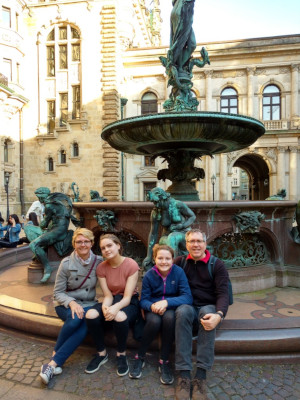
Making a difference to the people I work with. Play the game of creating possibilities for others so that I can get stuff done through others. Challenging myself to learn interesting things.
What’s the most important skill or insight you’ve developed while getting involved with this industry?
While the technical skills are very useful, they are not sufficient for delivering great outcomes in a high performing team.
You are “fighting a war”, just because you lost a battle does not mean it’s over. Regroup and find another way to make a difference.
Politics matters. As an independent consultant, I focus on the challenge and look to see how best I can focus on delivery and long term value.
Get the customer and key stakeholders in the boat. “Unity of Purpose”. We are in this together. Create/revise working agreements.
What are the greatest challenges on your path to using/improving the techniques you favor in this sector? Where do you see TameFlow in this?
The Agile Industrial complex. Demand for SAFe. Do I or don’t I fall into line? My independent nature compels me to resist being assimilated but I need to pay my bills :(
What happens when SAFe 7.0 is issued incorporating “Tameflow”?
Philippe Guenet wrote a great paper “State of Agile using maps"(Wardley Maps - A collaborative facilitation and thinking tool.)
Human nature. We want to be able to tell a good story. “If I am at a non-constraint, how will I tell a good story about how I saved the day?”
What are the greatest rewards you’ve had (personally or professionally) or would like to receive in this industry?
The relationships and the work I did with teams at Elsevier in 2006. CEO sponsored a new product development experiment with Agile. WAS FANTASTIC. CI, pair programming, user research, prototyping, business sponsorship, XP development practices. The works!
Leading teams that made the first release at the MOJ.
What do you want to learn from a community of peers, like the one here TameFlow Community site?
Examples of challenges and how they have been overcome.
Sales pitch for the Tameflow approach.
Work on shared materials to use in live engagements.
Outline of typical topics to be covered when taking on new engagements.
Work on metrics tooling. Spreadsheets / Google docs or maybe Jupyter Notebook and Python script. (I often need to keep data private.) I have been working on a public draft here
I want to do a few more iterations on this and keen to work with others who are interested in making use of it.
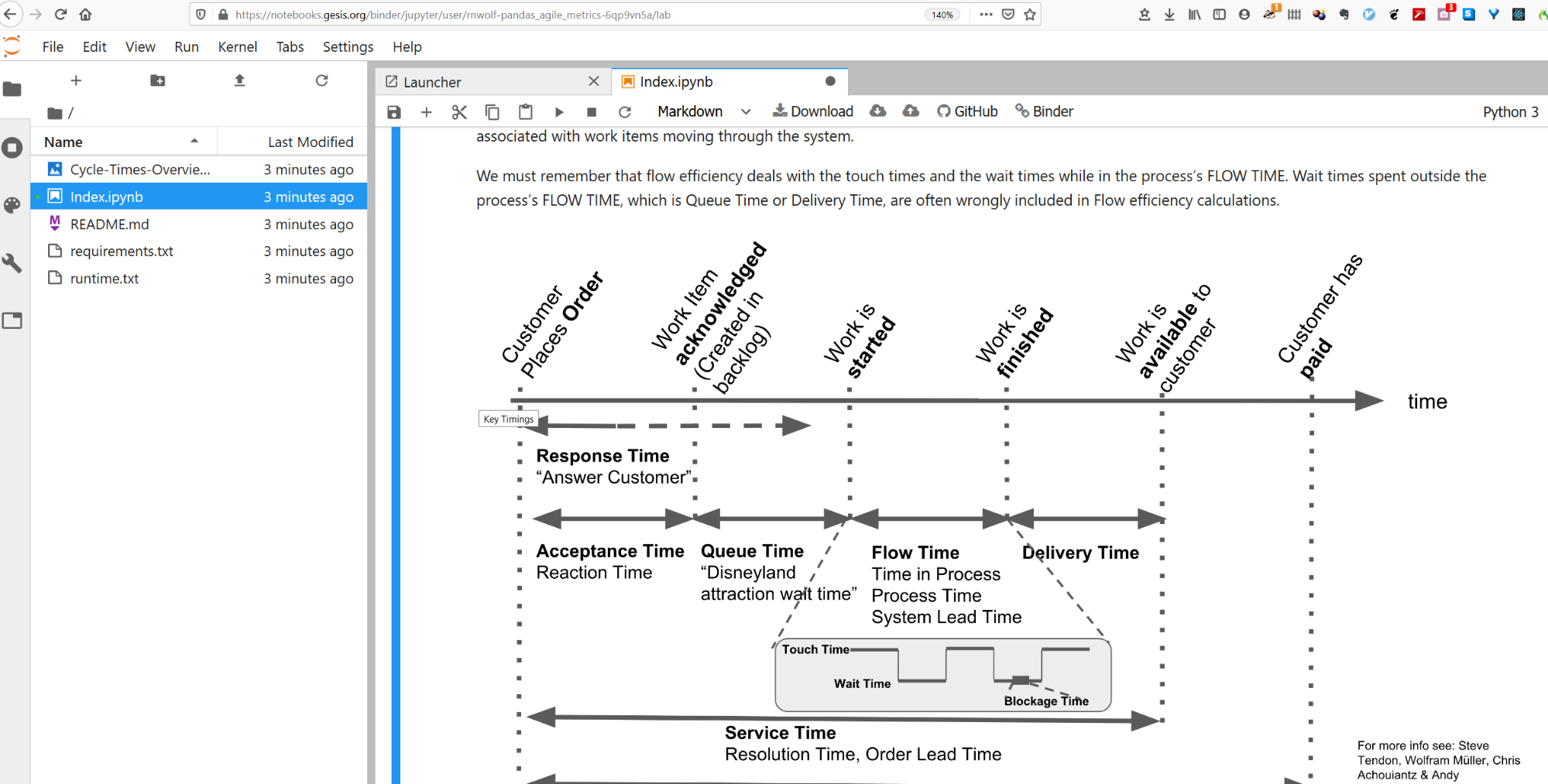
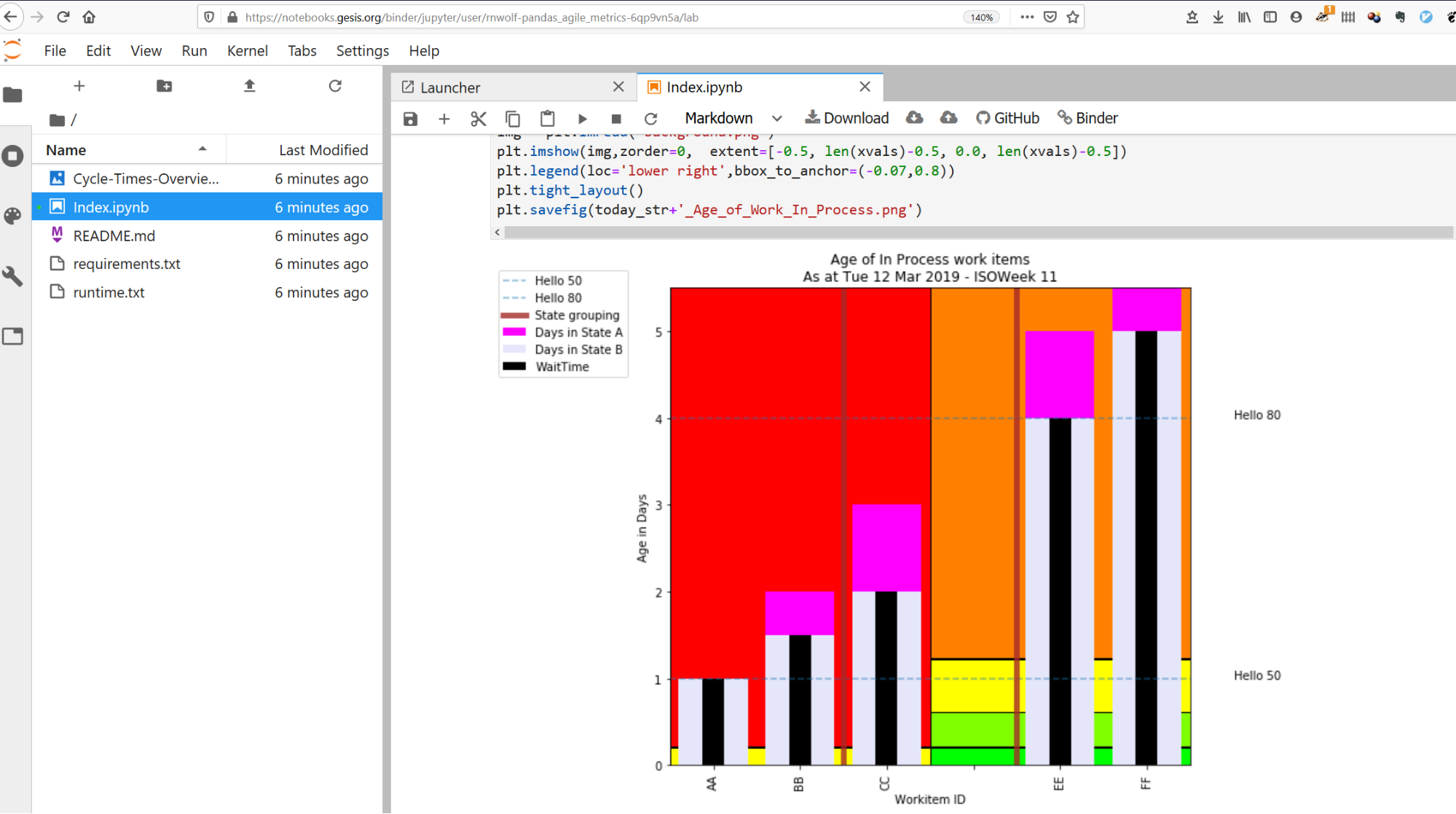
If other TameFlow enthusiasts want to reach out to you, where do they find you? And what is your TameFlow Community handle?
They can find me here:
-
On the TameFlow Community site: rnwolf
-
On Twitter: @rnwolf
-
On LinkedIn: https://www.linkedin.com/in/rudigerwolf/
-
Personal Website https://www.rnwolf.net
What question(s) would you like to ask Steve, or what topics would you like him to develop ( in relation to the TameFlow Approach)?
How to get a mind share and attention of the decision makers, in order, create opportunities to use TameFlow Approach?
How to structure an engagement, in order to get the independence required for the approach to work.
Stories of approaches that you have taken to sell TameFlow vs the rest.
Herbie talks about… Prioritization criteria used in TameFlow
A question raised by Øystein Mehus in the previous an Campfire was about what prioritization criteria is preferred in the TameFlow Approach, and how it compares to other known ones, like Return on Investment (ROI) or Cost of Delay (CoD).
The elements are illustrated in the following drawings.
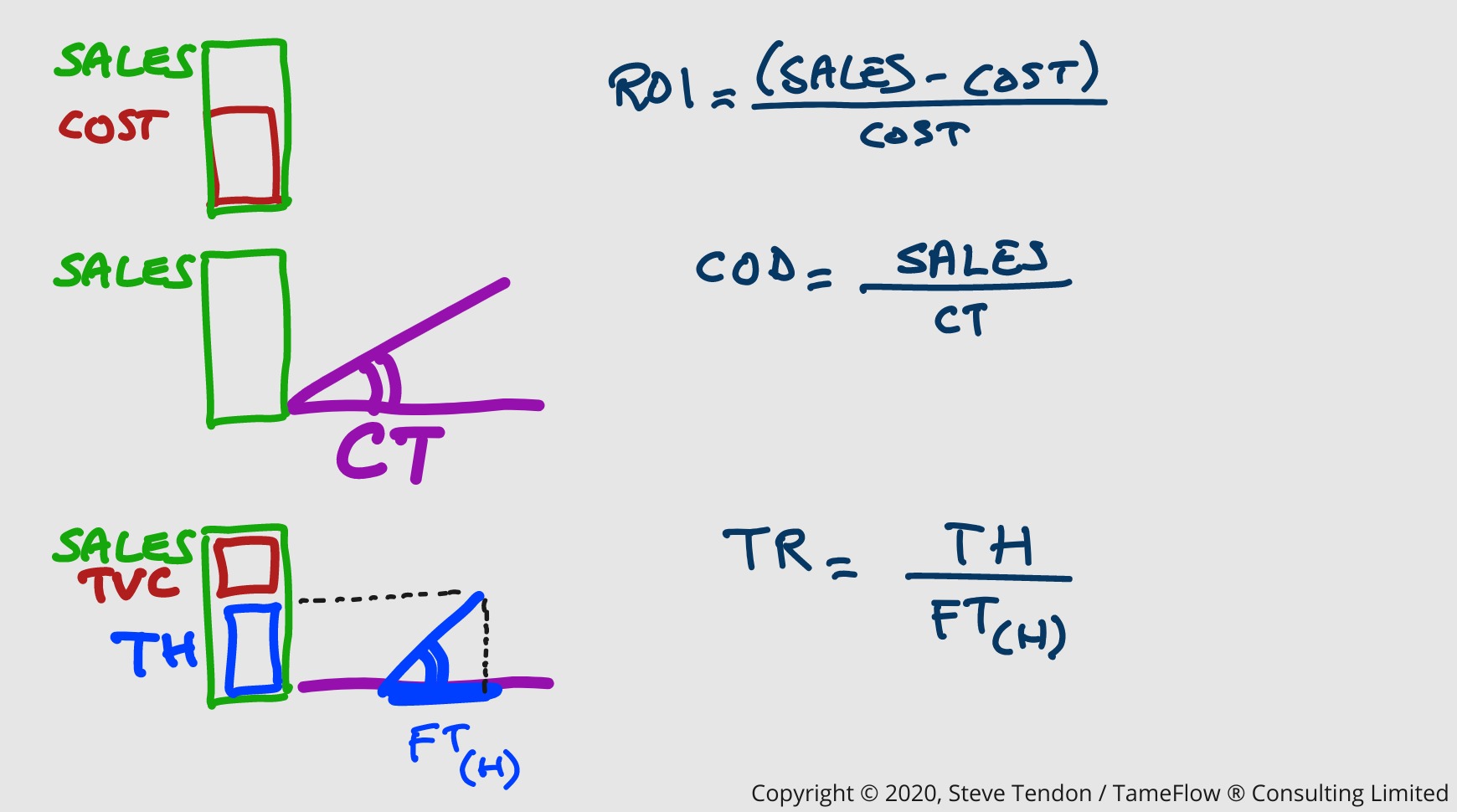
In this drawing:
Traditional ROI compares Cost to Sales and defines ROI as:
ROI = (SALES - COST) / COST
The criteria is that the higher the ROI the better.
CoD, unlike ROI, pays more attention to how much time the work to be done employs to get produced by the system. Typically it considers the Cycle Time (CT) - what in the TameFlow Approach is otherwise known as the Flow Time (FT) - of that work through the system. Then CoD is defined as:
CoD = SALES / CT
The criteria is that the higher the CoD, the better.
In the TameFlow Approach we use the Financial Throughput Rate (TR).
TR = TH / FT(H)
The TR is defined as the ratio between the Financial Throughput (TH) and the Flow Time (FT) that the work employs on the Constraint, which we denote with FT(H).
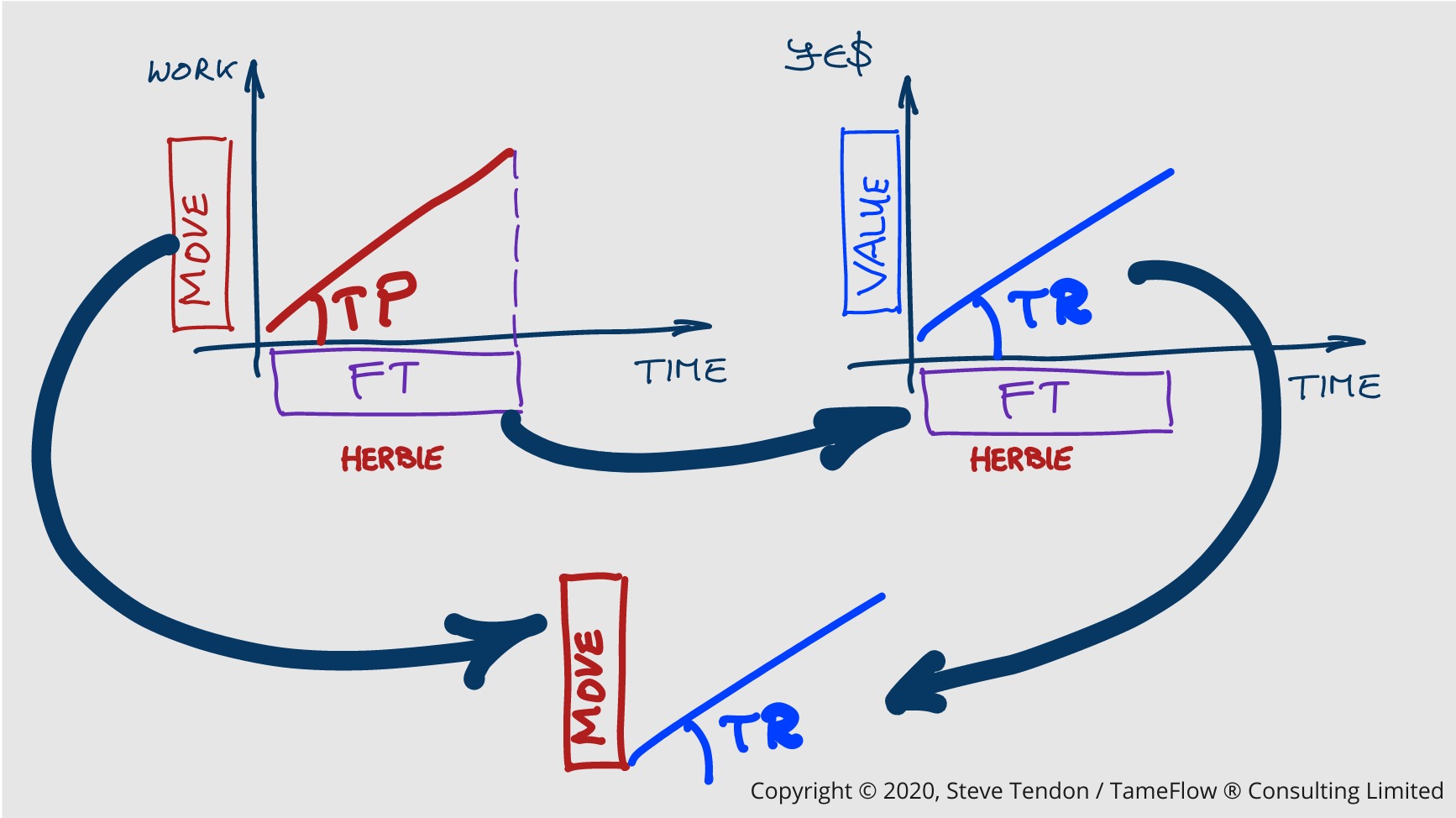
In this drawing, we can see how this is used in practice, and typically during the Full Kitting activity.
At first, the engineering team is asked to provide an estimate (actually a forecast via probabilistic forecasting) of the expected average FT(H) of the MOVE that needs to be prioritized. It can be derived via Little’s Law knowing the historical Operational Throughput (TP) of the Constraint.
Naturally we have:
FT(H) = MOVE / TP
Once FT(H) is known, the business team is required to provide a value estimate (expressed in the reference currency of the business) representing the expected Financial Throughput that will be realized through sales of that MOVE.
Then the Throughput Rate can be calculated as:
TR = VALUE / FT(H)
In this way we can associate a MOVE to a calculated Financial Throughput Rate. This will be compared to the TR of the other MOVEs that need to be prioritized. They will be put in order of descending TR.
Notice that this happens during the Full Kitting activity. If the calculated priority is not acceptable to the stakeholders (typically the Product Owners, but not only), a different order can be negotiated. If the negotiation fails, then the issue is escalated to top management for ranking resolution.
The TameFlow Approach is distinctive with respect to other mainstream approaches (Scrum, SAFe, Kanban, etc.) because it require the business side of the organization to provide value estimates, and to collaborate with the engineering team in order to establish the priorities.
If you found the topics in the “Campfire Talks with Herbie” interesting, there is much more to learn about them in the The Book of TameFlow book.